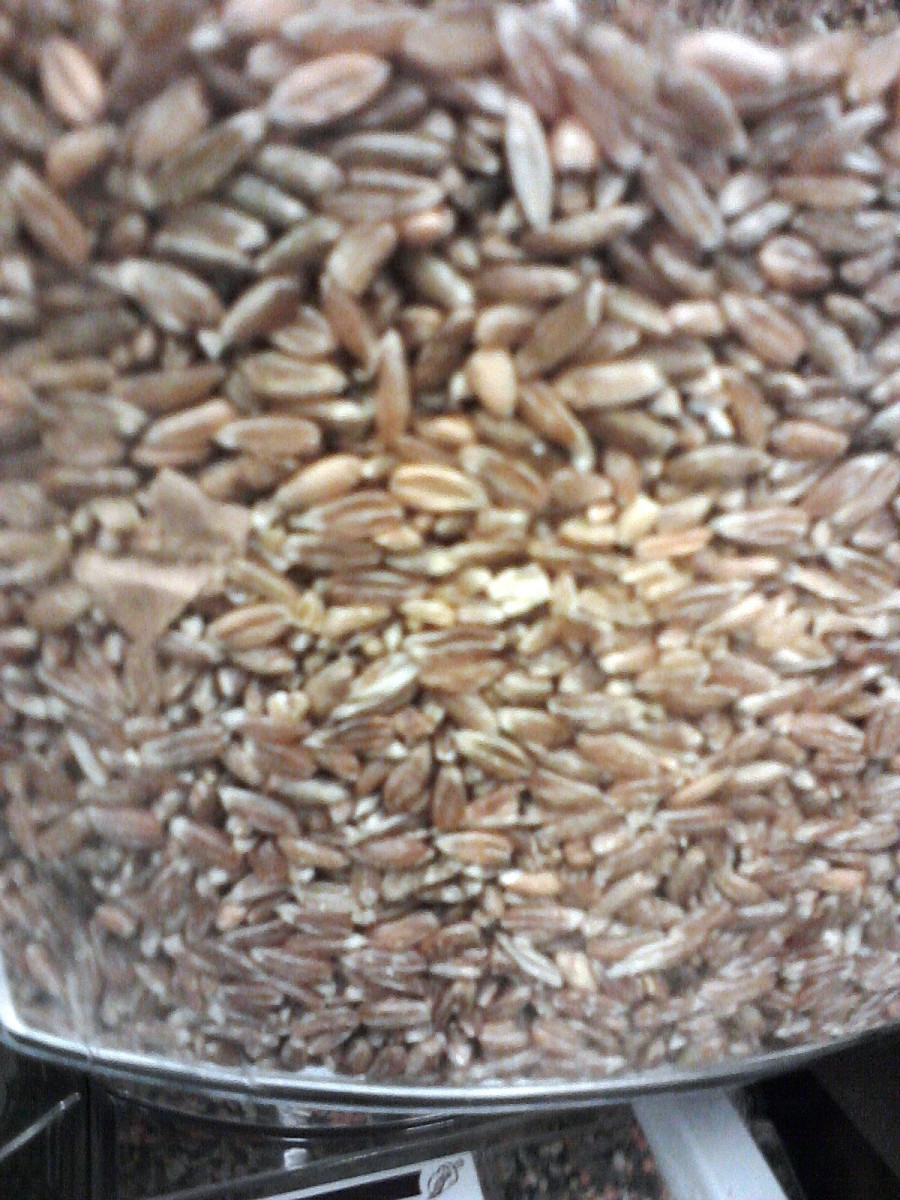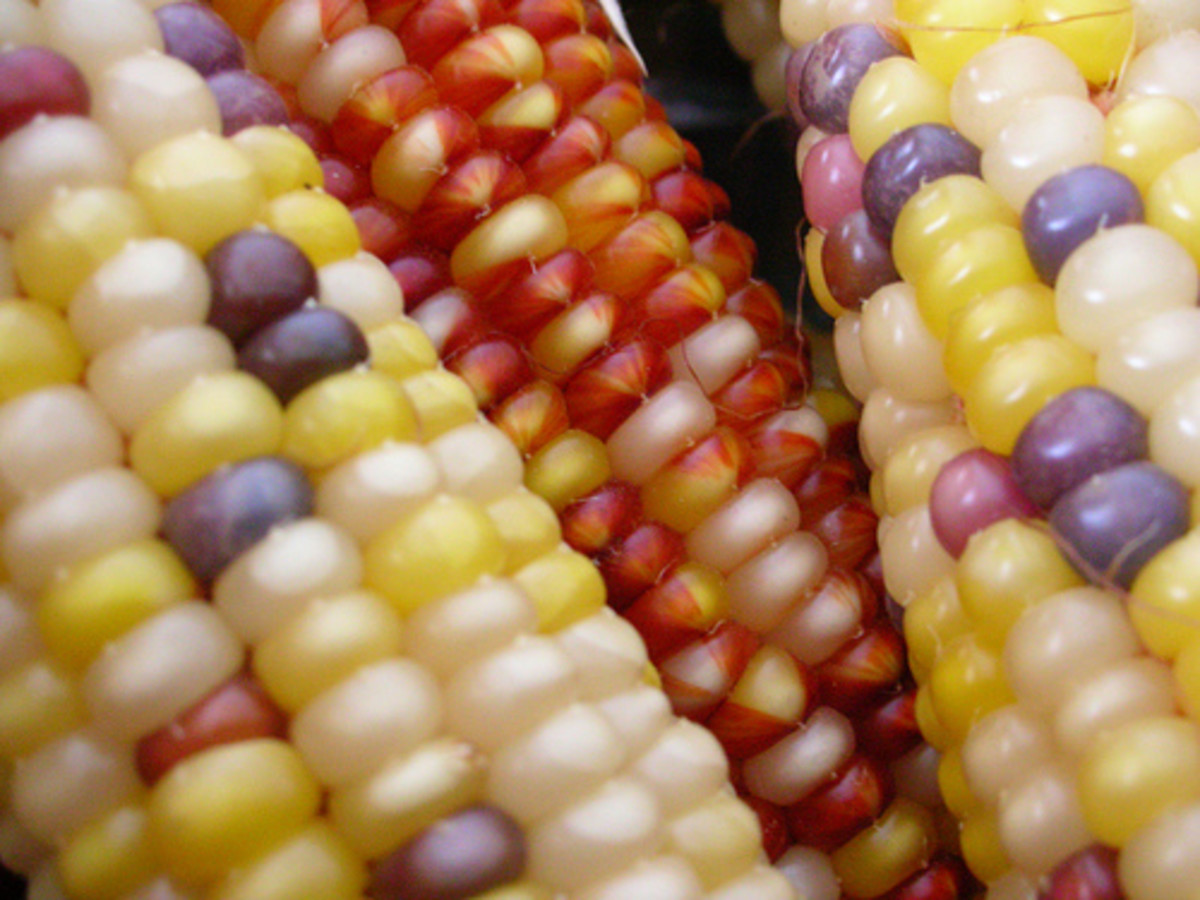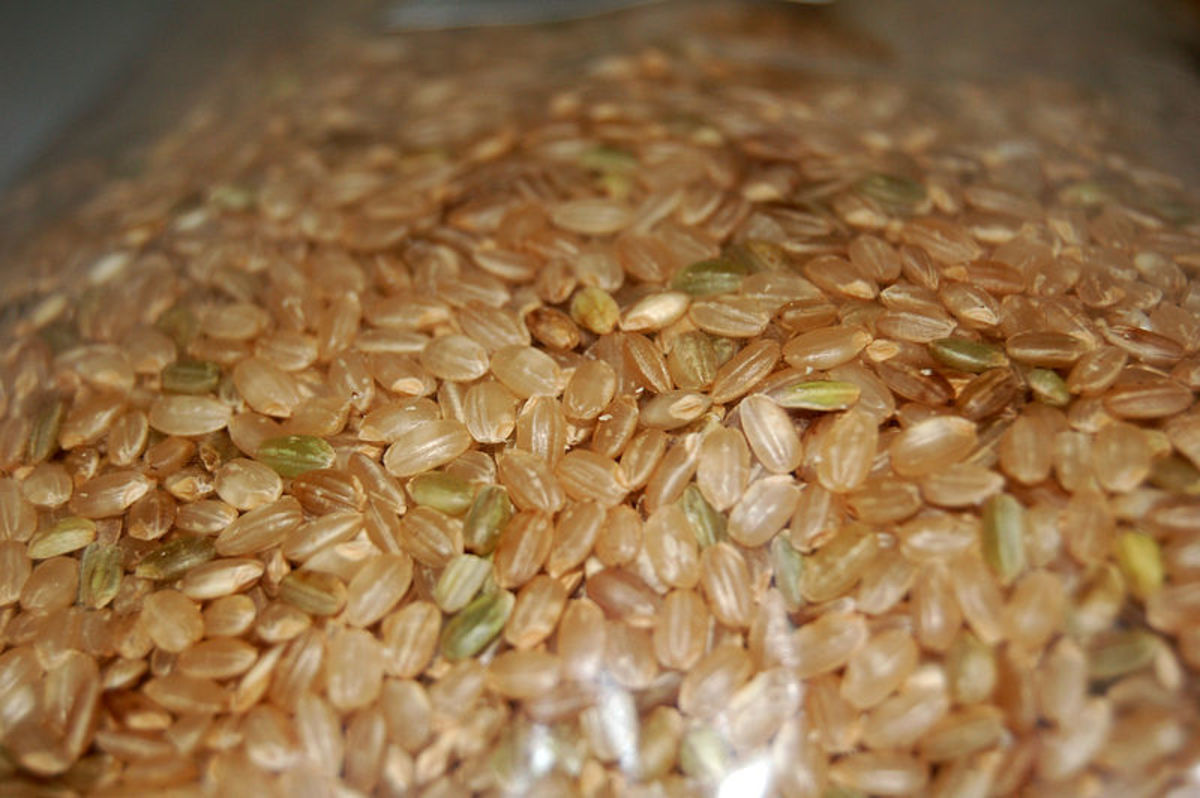Teff: Nutritionally Super Grain
Most people in the world probably haven’t heard of teff. Teff is an ancient Ethiopian grain that was known only in Ethiopia until very recently. But Ethiopia's best kept secret, this super grain is now out in the open and the world seems to be catching on. Researchers have estimated that teff goes as far back as 5,000 years. After having been foraged for a while, teff was first cultivated in Ethiopia between 4000 and 1000 B.C. It is still the major staple in the Ethiopian diet.
Teff is the tiniest of all grains measuring 1.5 mm in length and 1mm in diameter. Its name ‘teff’ came from the 'Amharic' word ‘teffa’ which means lost. which points out its tininess. In ancient times the Ethiopian empire stretched far and wide in North East Africa. Legend has it that it stretched all the way to Egypt. The Egyptian Pharaohs probably realized the value of this tiny grain that packs so much nutrients in it. This may explain teff grains being found in some pyramids dating back 3000 to 4000 years. In our modern times, teff is slowly becoming popular along with quinoa and spelt. Teff is now being grown in Kenya, South Africa, India, Australia, and the United States.
Three Types of Teff
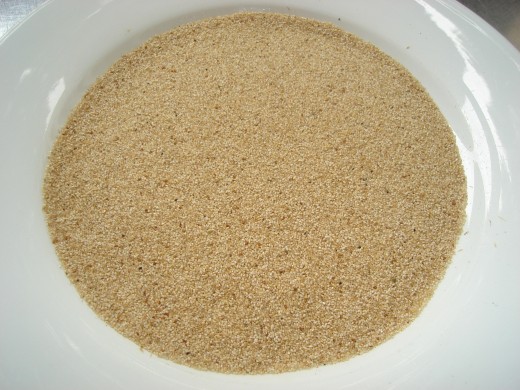
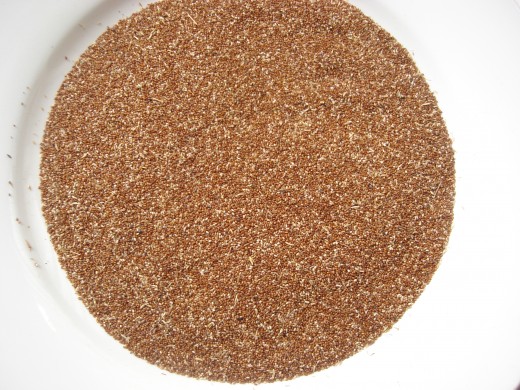
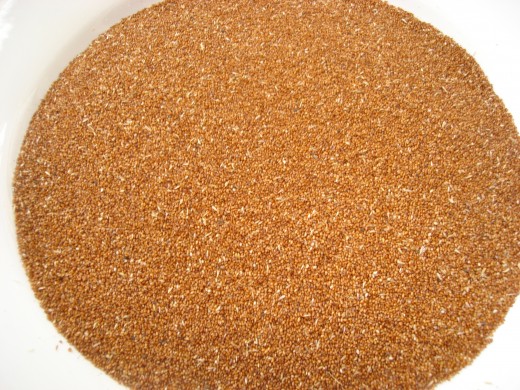
Types of Teff
There are 4 main types of teff. The most expensive type is white teff known as; 'magna'' teff by Ethiopians. It is hard to grow and only grows in the Ethiopian highlands. It used to be available only to kings and nobility in the old days. But now a days its popularity has decreased because the darker variety teff happens to contains more nutrients than white teff. There is the teff known as sergegna which grows as a mixture of white and red teff. Then there is the dark red teff. It is the reddish brown in color and used to be the least popular and was eaten by only poor people. It is now gaining in popularity because scientific research has found it to be the most nutritious teff. It has the highest content of iron, calcium, phosphorus and other minerals and vitamins. It also has the highest amount high quality protein. Last but not least is dark brown teff.
White and Red Teff Flour
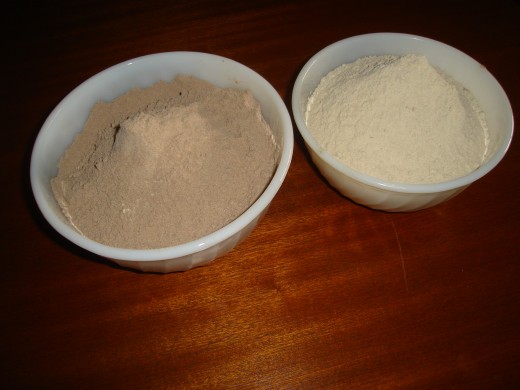
The Nutritional Value of Teff
Teff is one of the most nutritious grains in the world. Teff has always been known to contain high amounts of iron. More recent research is showing it has many other important nutrients. It has 12% protein, 80% complex carbohydrate, 3% fat. It is very rich in essential amino acid. It has the highest amount of lysine than any other grain except for rice and oats. Since teff is so tiny it cannot be hulled or processed in any way. So its flour contains every part of the seed including the bran, angiosperm, and germ and therefore contains the highest amount of fiber exceeded only by dark rye. Teff also contains the highest amount of calcium, potassium, and thiamine. Another property of teff is that it is virtually gluten free. That might be the reason why it is gaining in popularity in the West. About 2% of the population of European descent is gluten intolerant. Teff can make a very nutritious and delicious replacement for wheat and other grains that have gluten.
Because it is gluten free it is considered a possible aid to celiac diseases. Other scientific studies show that teff is a great deterrent to diabetes because of its high fiber content.This super grain is also becoming part of the diet of athletes. Mixed with soy and other foods teff is also becoming popular as baby food.
Teff grass has always been considered one of the most nutritious feed for animals in Ethiopia. Now the world is also discovering this secret. The grass is also used for tatched roofs and as a component of adobe mud brick in Ethiopia.
Articles on Nutritional Value of Teff
- Nutrition Facts and Analysis for Teff, uncooked
Nutrition facts and Information for Teff, uncooked - NEJM -- The Ethiopian Cereal Tef in Celiac Disease
Correspondence from The New England Journal of Medicine -- The Ethiopian Cereal Tef in Celiac Disease - http://www.celiac.com/catalog/product_info.php?products_id=1220
- Teff Grain: a Gluten Free Health Food | dietary-fiber
What makes teff grain even more attractive is the fact that it is a gluten free food. Gluten is a protein that causes allergic reactions to some people (eg. those with celiac disease).
Teff (Eragrottis Teff)
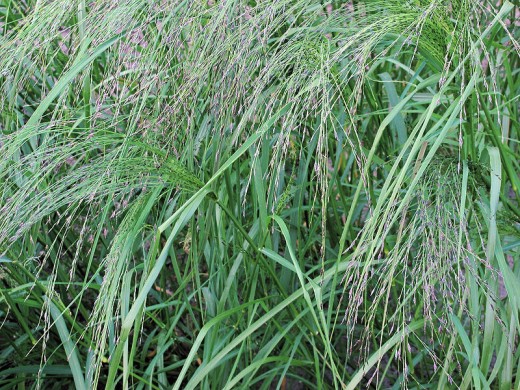
Injera has a spongy quality
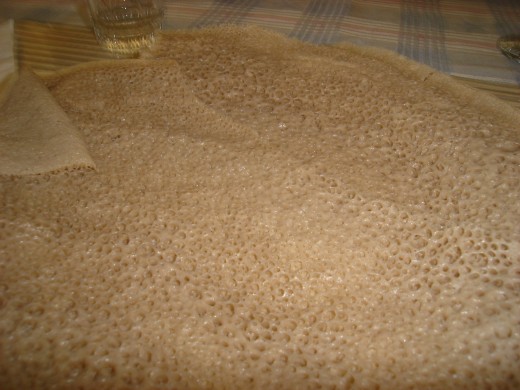
Injera and Wots (stews)

Rolled and Sliced Injera with a Couple of Dishes
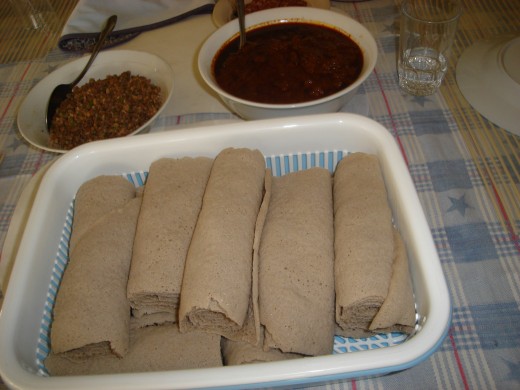
How Teff is Eaten
In Ethiopia teff is a major staple and is made into flat bread known as ‘injera.' Injera is a fermented slightly sour bread. The fermentation process enhances its nutritional content. This process takes about three days. Ethiopians in the diaspora has modified this processes and have found a variety of easier methods to make injera. Since teff is gluten free it is not suitable to make breads that rise. When you cook injera it will make bubbles and make wholes as the carbon dioxide escapes into the air. Injera is round and thin with many holes in it. The wholes give it a spongy quality. Traditionally injera is the size of a large pizza. The injera is used to line a big round tray or a basket and on the injera various types of stews known as wot is scooped. The stews could be various types of meat or vegetable dishes or a combination. These stews are spicy and some are very hot. In the hub "Ethiopian Vegan Cooking", you will find some recipes for these sauces. They can easily be adjusted to western tastes. They go very well and are quite delicious with the injera. The way you eat injera is you break a small piece of the injera about 3 inch by 3 inch and then scoop the wot with it and kind of wrap the injera around the sauce and eat. Many westerners describe injera being used as tablecloth and eating utensil that is edible.
In another hub I will give various recipes on how to make injera including the traditional Ethiopian recipe. In the U.S Americans have found many creative ways of cooking with teff. It is used to make pancakes, to thicken soup, in pastries and breads as breakfast porridge etc. I will also give recipes for some of these dishes soon.
Traditional Ethiopian Injera
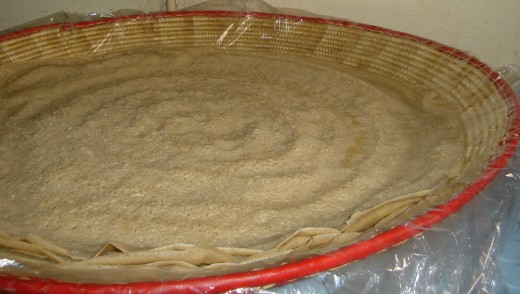
Teff Storage
The teff grains can be stored in a cool dry place in a tightly closed container almost indefinetly. The flour can be stored in tightly closed glass, ceramic, or wooden container up to 2 years also in a cool dry place.
Where to Find Teff
If you live in one of the big cities in the U.S., you can buy it locally at an Ethiopian ethnic food store or some of the Ethiopian restaurants may carry them. Many health food stores also carry them. Otherwise you can order them on line. Amazon carries a good selection of grains and flour



